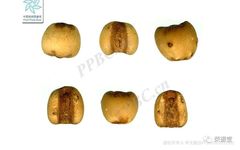【Properties】Sweet; bland, slightly cold
【Meridians】Spleen; Lung; Kidney
(What does it mean to feel nostalgic about Coix Seed?)Coix Seed is a well-known medicinal and edible material. When Coix Seed is mentioned, one can easily envision its round and plump appearance, and even imagine the aroma of a soup made with coix, winter melon, and pork bones. Cooked Coix Seed has a soft yet textured bite; while it is not overwhelmingly strong in flavor, it has its own distinctive light fragrance.
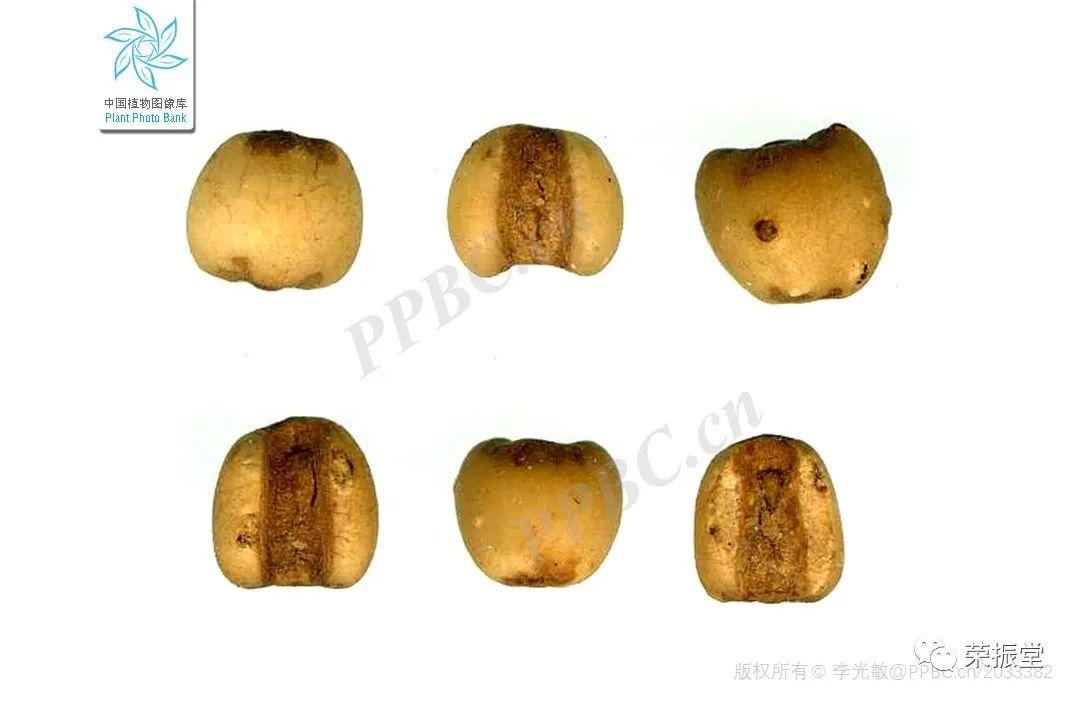
(Image courtesy of PPBC, photographed by Li Guangmin)According to TCM texts, Coix Seed has the effects of promoting diuresis, strengthening the spleen, relaxing the muscles, and clearing heat and pus. It is indicated for conditions such as edema, beriberi, urinary dribbling, damp-heat diseases, and diarrhea. It can also be used in combination to treat rheumatic pain, muscle spasms, and conditions like lung abscess and intestinal abscess; it is also effective for flat warts.
If you still don’t understand how Xiao Xiong analyzes Chinese herbs, please refer to the previous articles:
Imagination One: Why can plants be used as medicine
Theory Two: Plant adaptation to the environment
Interesting Three: The impact of harvesting time and parts on medicinal properties
Conclusion Four: The processing of Chinese medicine is like adding flowers to a brocade
Understanding the Habitat of Coix Seed
KNOWING LIFE
Coix Seed comes from the fruit of the Coix plant, which belongs to the family Poaceae and the genus Coix, a robust annual herb that can grow up to 1-2 meters tall.
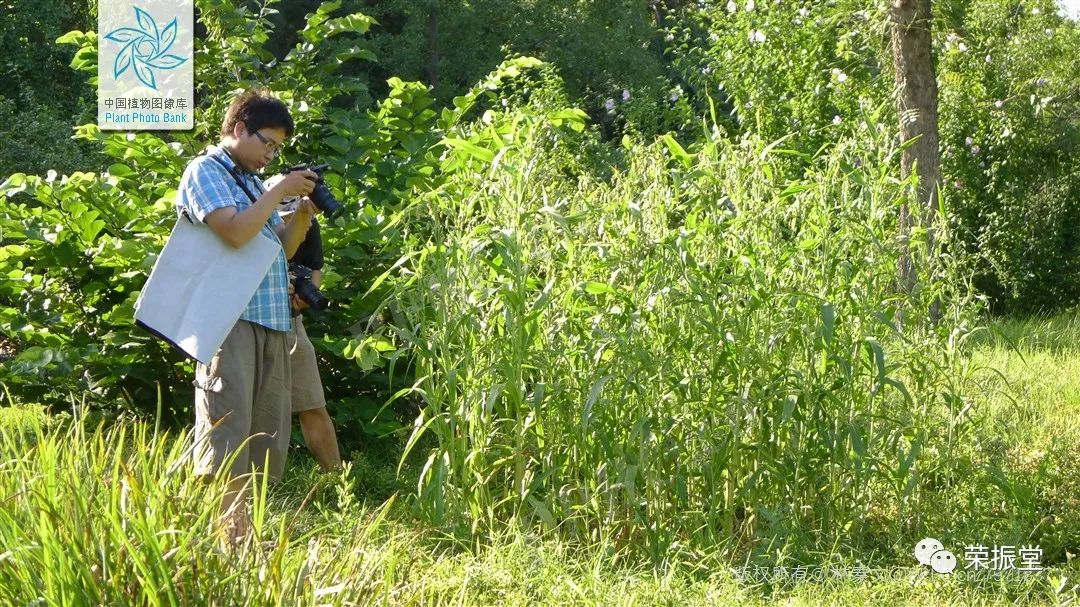
(Image courtesy of PPBC, photographed by Lin Qinwen, teachers who photographed the plant habitat)
It is distributed in Southeast Asia and Pacific islands, and is cultivated or grows wild in tropical and subtropical regions of the world, including Africa and the Americas. Coix is a wetland plant that is highly adaptable, preferring warm climates, avoiding high temperatures and humidity, not tolerant to cold, and avoiding drought, with no strict soil requirements. It often grows in moist areas such as beside houses, ponds, riverbanks, valleys, streams, or flood-prone farmland (preferring water), and is commonly found at altitudes of 200-2000 meters, making it widely distributed in China, especially more common in the south.
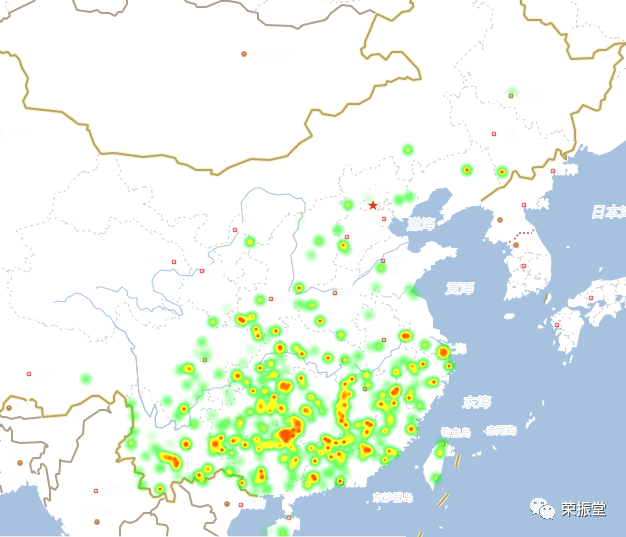
(Image courtesy of Plant Intelligence, map visualization provided by Baidu)Coix reproduces by seed germination, completing its life cycle in one year. In its natural habitat (not artificially cultivated), when the ground is dry and seeds fall, they will begin to germinate when the temperature and humidity are suitable, and the seeds absorb 50% moisture. The Coix fruit germinates quickly, with the primary root being yellowish-white and spongy, and its form is robust. It is evident that the initial rooting primarily grows deep for the main root, followed by lateral roots.
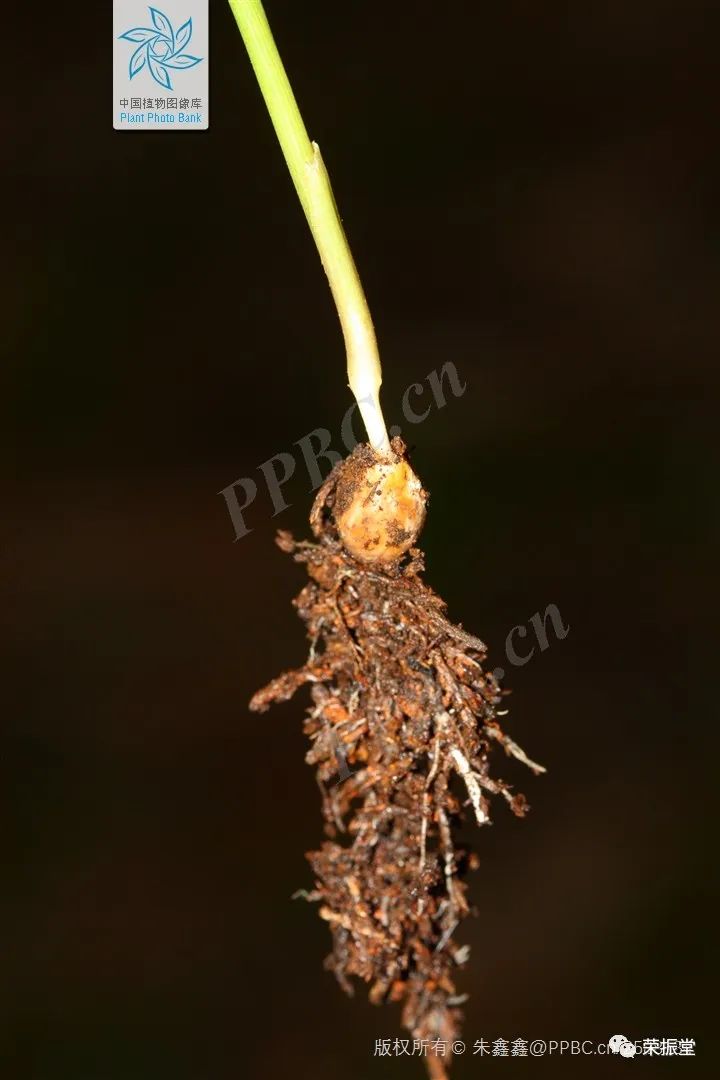
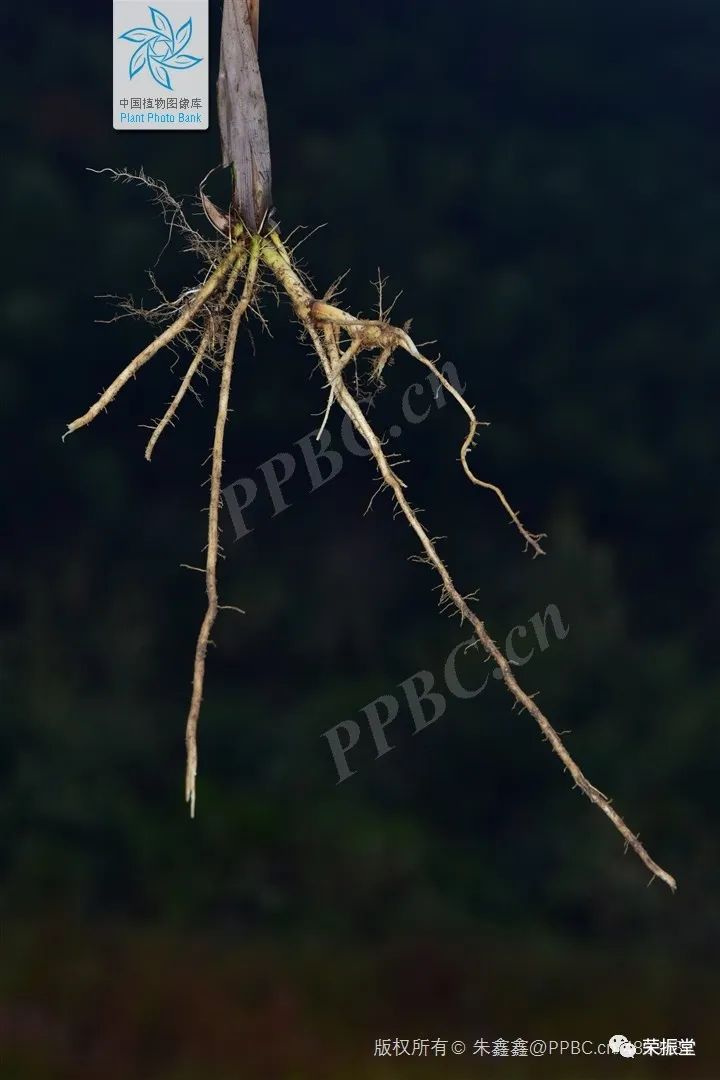
(Image courtesy of PPBC, photographed by Zhu Xinxin)
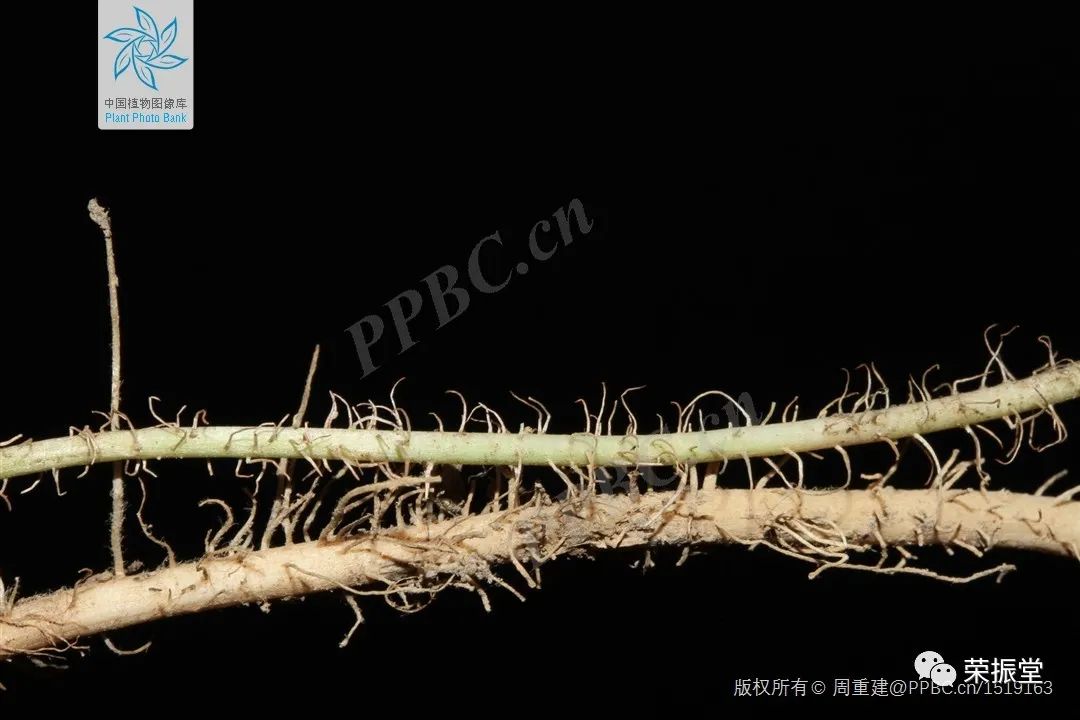
(Image courtesy of PPBC, photographed by Zhou Chongjian)While the roots of mature Coix plants may not be as dense as those of Alisma, they are long with many root hairs, and can branch out in different directions, thus their ability to absorb water and anchor the soil is sufficient to support the growth of the above-ground parts (though this hair structure reminds me of the first time I saw root structures).
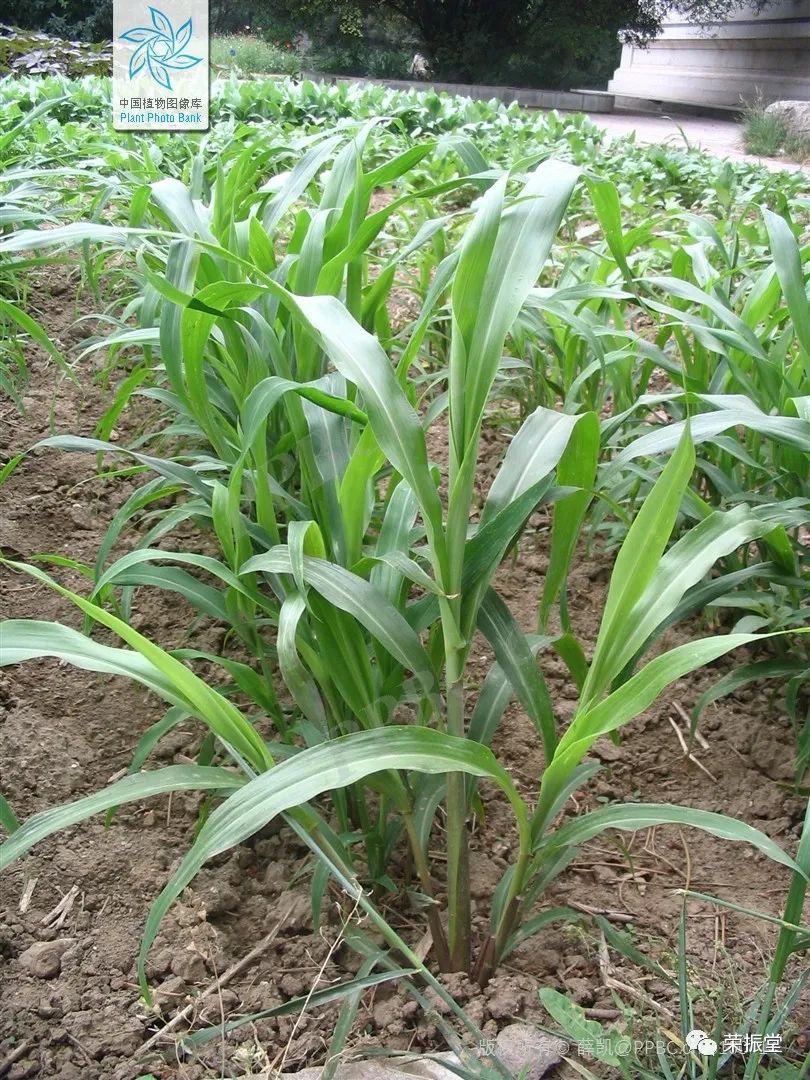
(Image courtesy of PPBC, photographed by Xue Kai)Stems are erect and clump-forming, reaching heights of 1-2 meters, with more than ten nodes when mature, and many branches. The stems are hollow (the position is close to the shock point, and the hollow resembles the various water pipes in the human body), but there are noticeable bulges at the hollow sections. At each node, the hollow seems to narrow and converge (similar to human veins and lymphatic vessels).
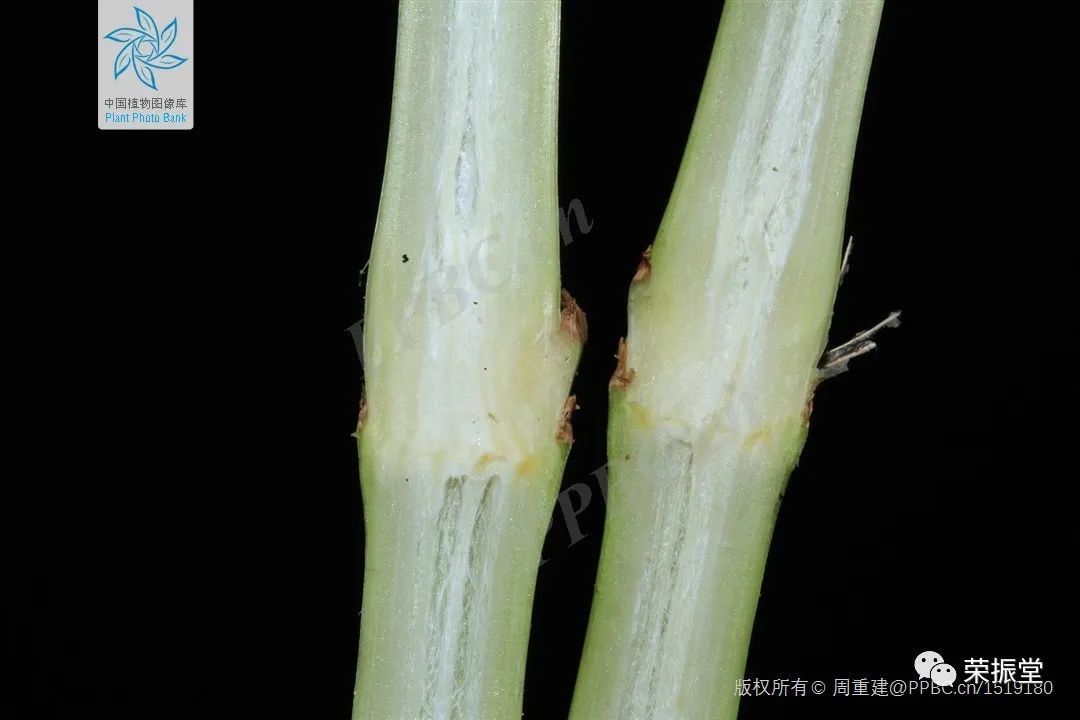
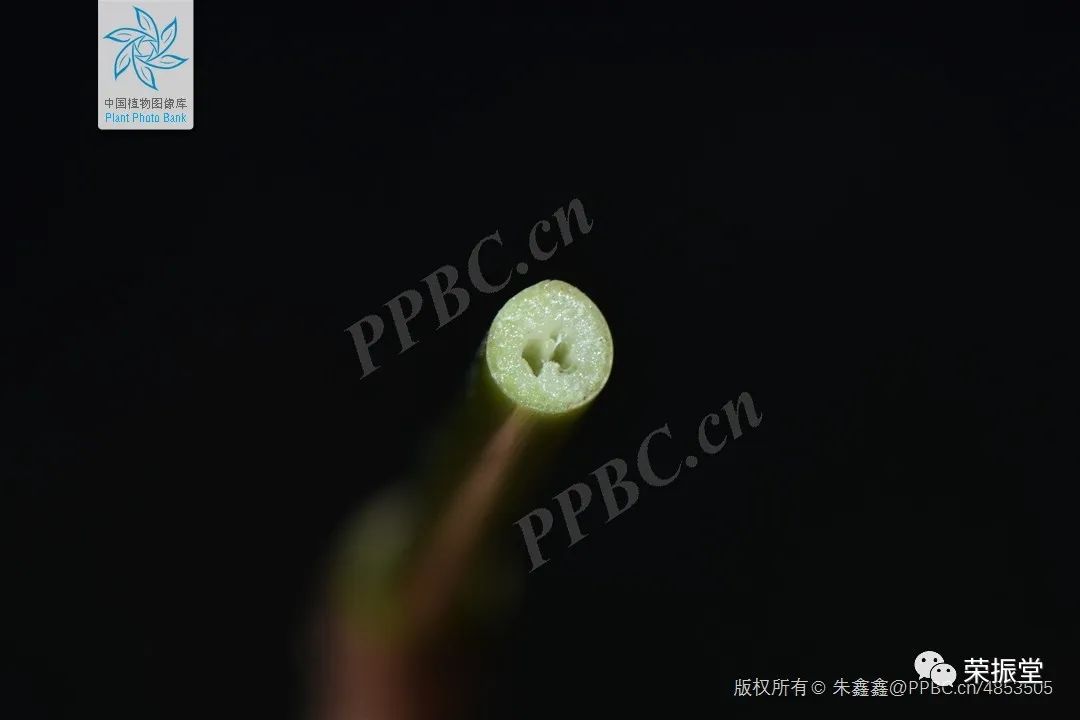
(Image courtesy of PPBC, photographed by Zhu Xinxin)
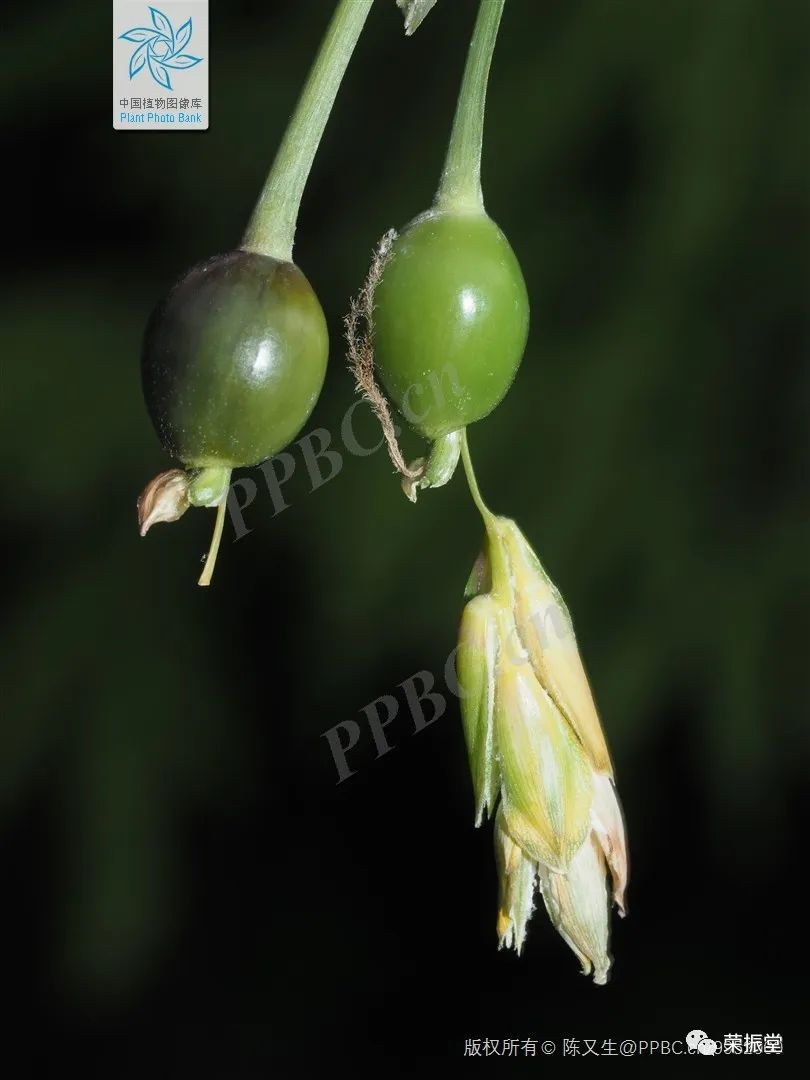
(Image courtesy of PPBC, photographed by Zhou Chongjian)Leaves are flat, broad, and spread out, overall long and strap-like, with a thick midrib that is raised on the back, and the edges are rough, usually hairless.
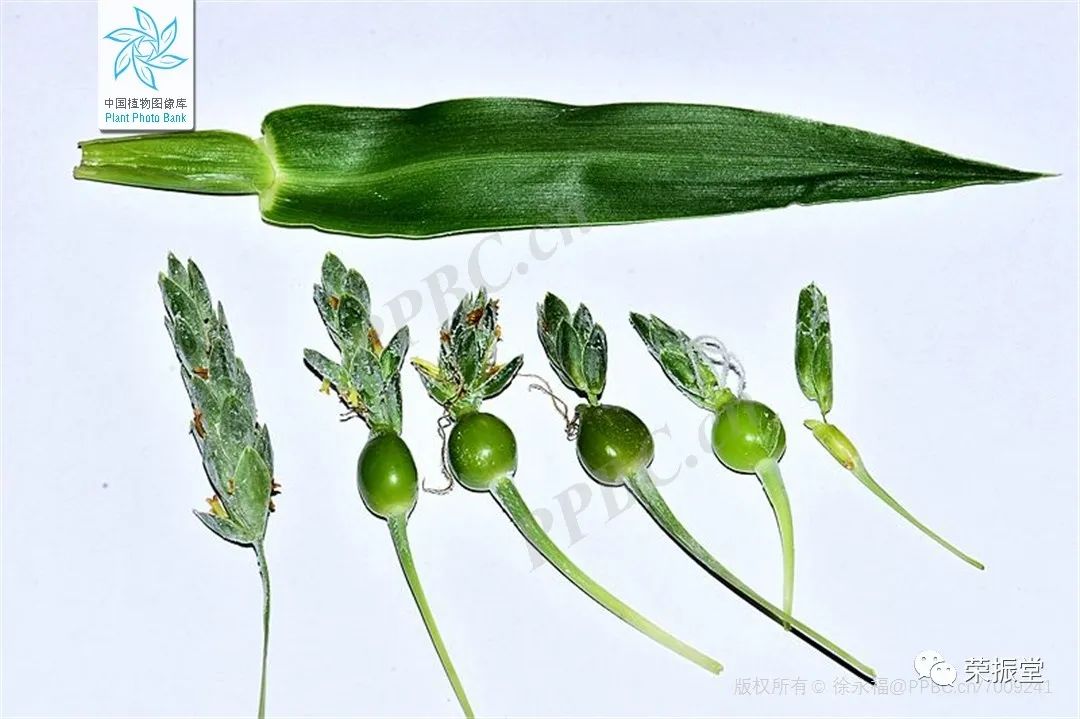
(Image courtesy of PPBC, photographed by Xu Yongfu)Flowering and fruiting occur from June to December, typically sown in spring and harvested in autumn, corresponding to the cyclical changes of yang energy in nature. Coix is monoecious, but male and female flowers do not bloom simultaneously. It requires wind and insect pollination. Therefore, wild Coix plants grow in fertile soil, needing a place with gentle breezes and a vibrant ecosystem (truly a life formed by harmonious conditions). The inflorescence is racemose, 4-10 cm long, upright or drooping, with long peduncles. During a certain period, flowers bloom and fruit successively, so we can even see Coix fruits at different stages on a single plant.

(Image courtesy of PPBC, photographed by Chen Yousheng)
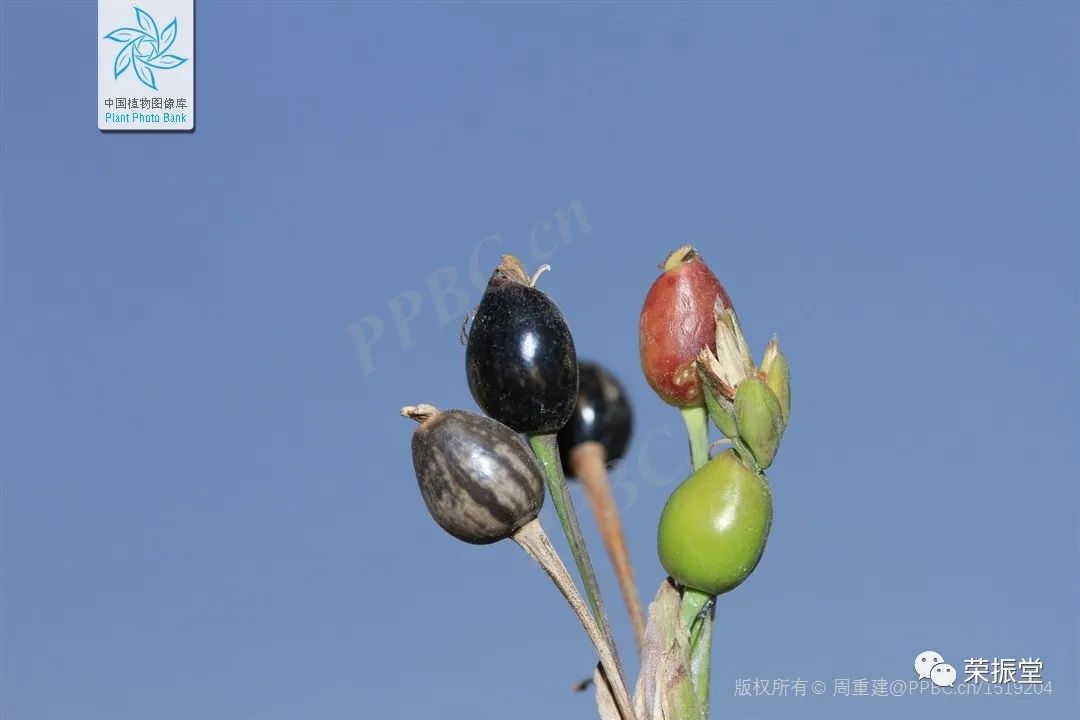
(Image courtesy of PPBC, photographed by Zhou Chongjian)Wild Coix grows in clusters, and when the plants die, the above-ground parts fall, allowing the dry fruits to drop to the ground. If there is sufficient moisture, they will germinate and root, thus slightly changing their position each year. Harvesting these mature fruits yields the medicinal Coix Seed.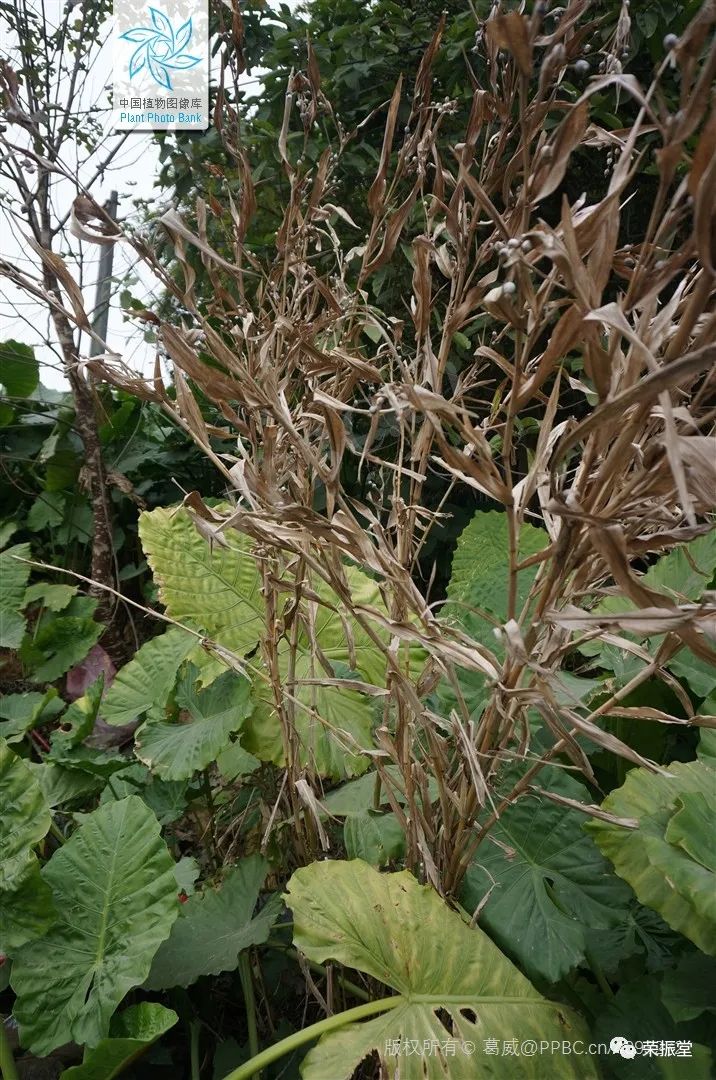 (Image courtesy of PPBC, photographed by Ge Wei)
(Image courtesy of PPBC, photographed by Ge Wei)
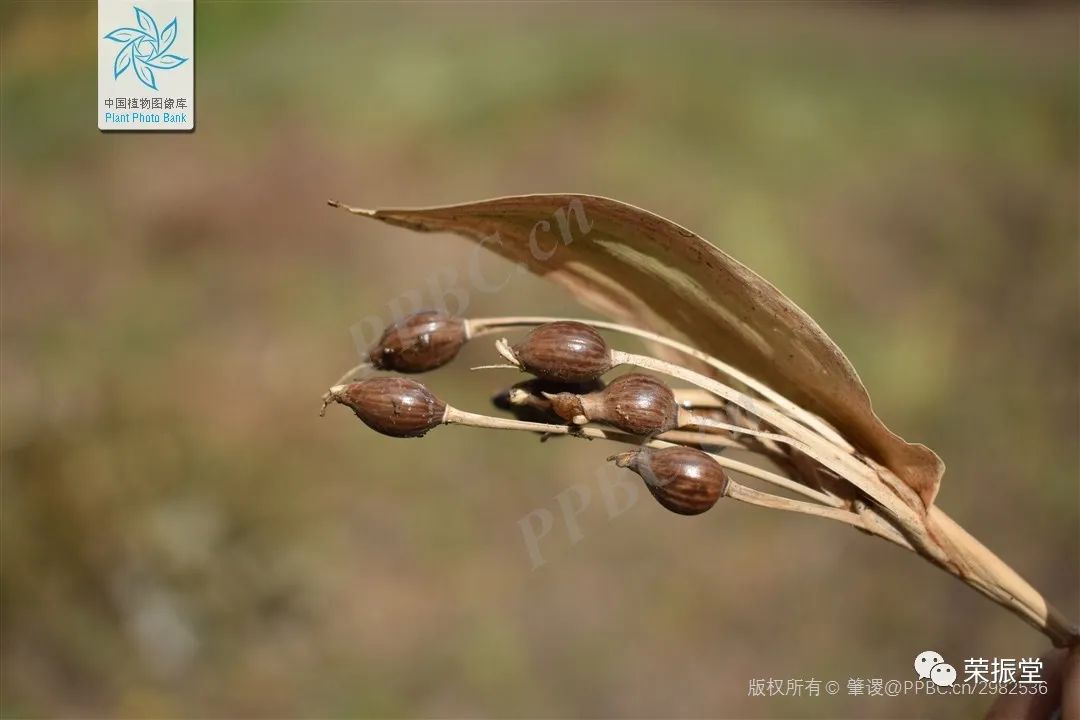
(Image courtesy of PPBC, photographed by Zhao Su)
The skin of the Coix fruit is dark brown and shiny, and when cut open, the freshest Coix Seed appears transparent white, resembling human cartilage, symbolizing the essence of “liquid”—”jing”.
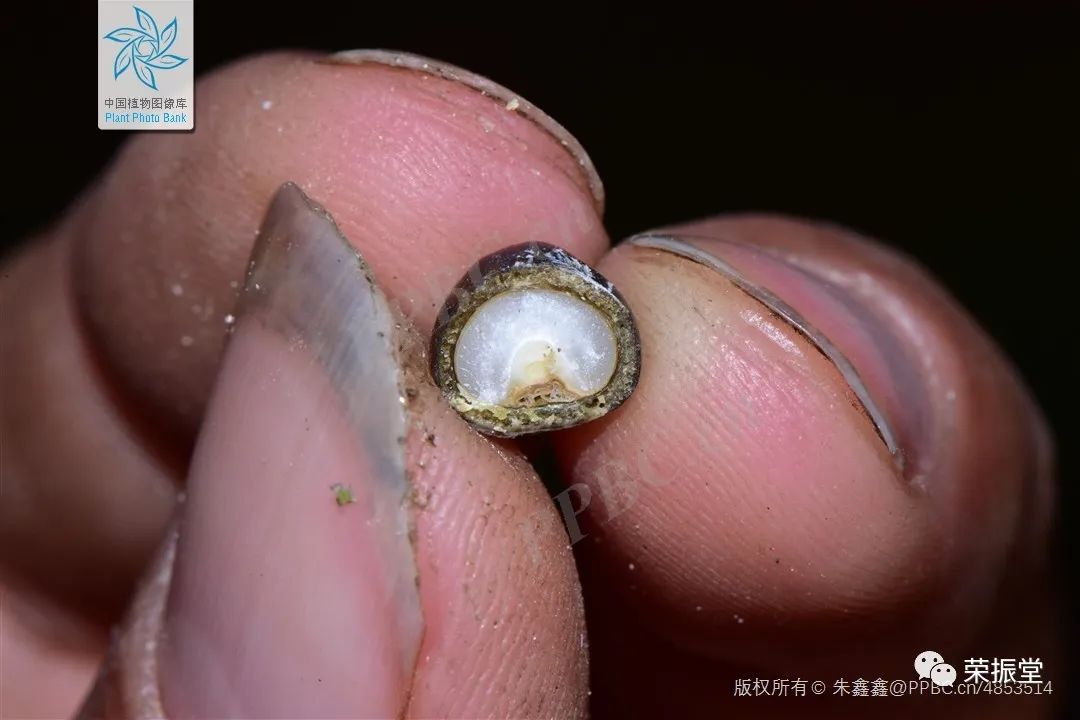
(Image courtesy of PPBC, photographed by Zhu Xinxin)
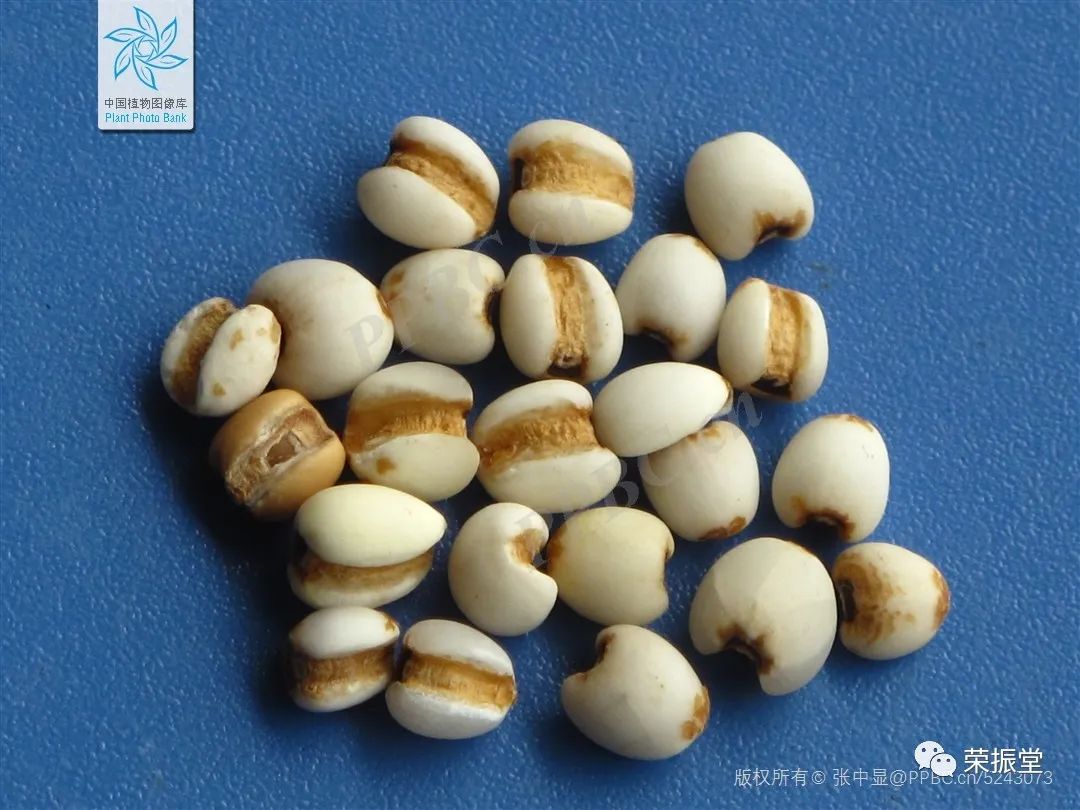
(Image courtesy of PPBC, photographed by Zhang Zhongxian)The peeled Coix Seed resembles the protein receptors on human cell membranes, particularly the well-known sodium-potassium pump. The yellowish-white color and sweet, bland taste of Coix Seed label it as “spleen-strengthening” and “nurturing the lung metal from spleen earth”; the Coix plant grows in rich, moist environments, thus its overall life form determines its diuretic properties; being monoecious and harmonizing yin and yang, it also has a wind-like quality, promoting transformation and completing a cycle of the postnatal bagua, with Coix Seed being the beginning of all this. This driving force is manifested in the Qian and Kan positions; the Coix stem resembles veins and lymphatic vessels, and its overall diuretic property allows it to clear the pathways and surrounding moisture, guiding them back to the right path, into the spleen and stomach, akin to a cleaner tidying up a sports field, keeping the field (spleen, limbs, and muscles) clean, full of positive energy, and free from blockages. In the pharmacy, Coix Seed also has different processing methods, such as raw Coix Seed and roasted Coix Seed. Raw Coix Seed is slightly cold, and if taken in large quantities (reportedly over 30g), it can cool the spleen and stomach, thus those with spleen and stomach deficiency and cold should avoid it. However, if the diagnosis indicates spleen heat or “fire sparks” in the earth, it may be suitable for use. Roasted Coix Seed eliminates this slight coldness, leaning more towards strengthening the spleen and preserving essence.
Selected Ancient Texts
OLD SAYING
“Shennong Bencao Jing”: It treats muscle spasms, stiffness, and inability to bend or stretch, rheumatic pain, and promotes qi. Long-term use lightens the body and boosts energy.“Leigong’s Explanation of Medicinal Properties”: It enters the five meridians of the lung, spleen, liver, stomach, and large intestine… Note: Coix Seed is generally for damp-heat, thus it enters the upper and lower five meridians.Heat causes muscle spasms, and dampness causes muscle relaxation; it can be used… Its effect is gentle, and it should be used frequently to see results.“Shennong Bencao Jing Baizhong Lu”: It treats muscle spasms and stiffness, inability to bend or stretch, rheumatic pain, and specifically eliminates damp-heat from the Yangming channel. It promotes qi and reaches the lower jiao. Long-term use lightens the body and boosts energy. When Yangming qi is smooth, the body is strong and energetic. Its roots eliminate the parasites caused by Yangming damp-heat… “Neijing” treats atrophy, specifically targeting Yangming.Coix is a Yangming herb, thus it can treat various ailments.“Bencao Beiyao”:It is slightly cold and belongs to the earth, a Yangming herb. It sweetens and benefits the stomach, earth overcomes water. It blandly drains dampness. It purges water to benefit the earth, thus strengthening the spleen… It benefits the earth to generate metal, thus nourishing the lungs and clearing heat (white enters the lungs, slightly cold clears heat)… It supports the earth to restrain wood, thus treating wind-heat muscle spasms and stiffness… Coix is a key herb for eliminating dampness, usable in both cold and heat conditions.Note: Summarizing and filtering ancient texts on Coix Seed, it is known as a Yangming herb, clearing Yangming damp-heat, whether in the organs or in muscles, whether spasms or atrophy.
“Bencao Xinbian”:Coix Seed is best for promoting diuresis without damaging true yin energy. For any dampness in the lower body, it is most suitable. Depending on the severity of the illness, the dosage should be adjusted, ensuring that yin and yang are not harmed, and dampness is easily eliminated…Thus, for any dampness symptoms, using 30-60g of Coix Seed as the main herb, along with herbs that strengthen the spleen and eliminate dampness, has never failed to yield quick results.If the flavor is diluted and used lightly, it will be of no benefit. (Note: Coix promotes diuresis without depleting qi, similar to the function of Poria)…Coix is born from the earth’s energy, thus it promotes qi without harming yin… Coix can only eliminate dampness from the lower body, but cannot eliminate dampness from the upper body. Although dampness from the upper body is similar to that from the lower body, they differ in origin; dampness from below is received, while dampness from above is sensed. Coix eliminates dampness from the lower body, how can it eliminate dampness from above?
Note: “Coix is best for promoting diuresis without damaging true yin energy”(promoting diuresis without depleting qi), this statement by the author Chen Shiduo, who practiced Taoist alchemy, is reassuring and credible. Compared to other herbs that promote diuresis and reduce swelling, Coix Seed can be used with more confidence. Additionally, it is mentioned that dampness and evil qi are received from below, making Coix Seed more suitable for eliminating lower body dampness (as it is better at eliminating dampness from the lower body).For treating dampness symptoms, a dosage of 30g-60g should be used as the main herb, supplemented with herbs that strengthen the spleen and eliminate dampness.
“Leigong’s Explanation of Medicinal Properties”:If cold causes muscle spasms, avoid it.
“Bencao Beiyao”:If there is dryness and constipation, cold and muscle spasms, or in pregnant women, it should not be used recklessly.
“Yaojian”:Pregnant women should avoid it.
Note: Due to its slight cold nature, but often used in large quantities, it should not be used for cold-related conditions; additionally, for dryness and constipation, promoting diuresis would worsen the situation; pregnant women should use it cautiously after proper diagnosis; if uncertain, it is better to avoid it.Clinical reference.
For previous summaries, please click the link below:
A Detailed Discussion on Chinese Herbs | Summary of Heat-Clearing and Detoxifying Herbs (Hexagram Position)
A Detailed Discussion on Chinese Herbs | Summary of Heat-Clearing and Damp-Drying Herbs
A Detailed Discussion on Chinese Herbs | Summary of Heat-Clearing and Fire-Purging Herbs (Hexagram Position)
A Detailed Discussion on Chinese Herbs | Summary of Exterior-Releasing and Cold-Dissipating Herbs
A Detailed Discussion on Chinese Herbs | Summary of Wind-Dispersing and Heat-Clearing Herbs (Bagua)
A Detailed Discussion on Chinese Herbs | Summary of Heat-Clearing and Blood-Cooling Herbs (Bagua)
A Detailed Discussion on Chinese Herbs | Summary of Clearing Empty Heat Herbs (Bagua)
A Detailed Discussion on Chinese Herbs | Summary of Laxative Herbs (Bagua)
A Detailed Discussion on Chinese Herbs | Summary of Wind-Dispelling and Cold-Dampening Herbs (Location)
A Detailed Discussion on Chinese Herbs | Summary of Wind-Dampening and Heat-Clearing Herbs (Location)
A Detailed Discussion on Chinese Herbs | Summary of Wind-Dampening and Strengthening Bones and Muscles Herbs (Location)
A Detailed Discussion on Chinese Herbs | Summary of Dampness-Transforming Herbs (Location + Hexagram)

